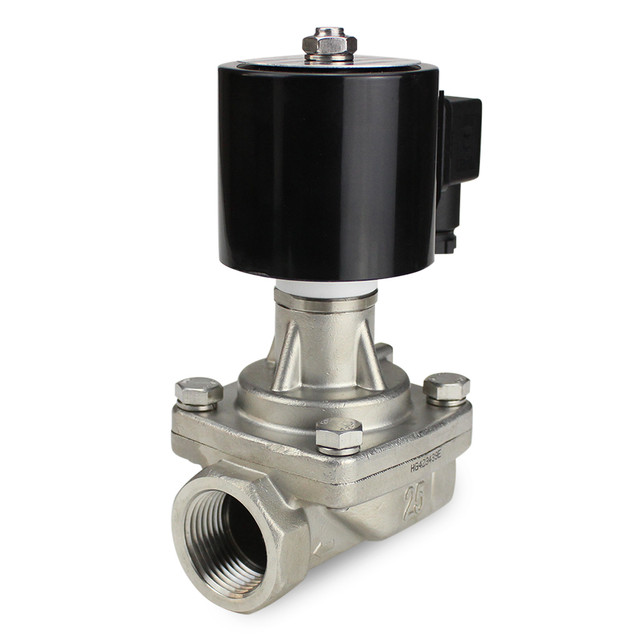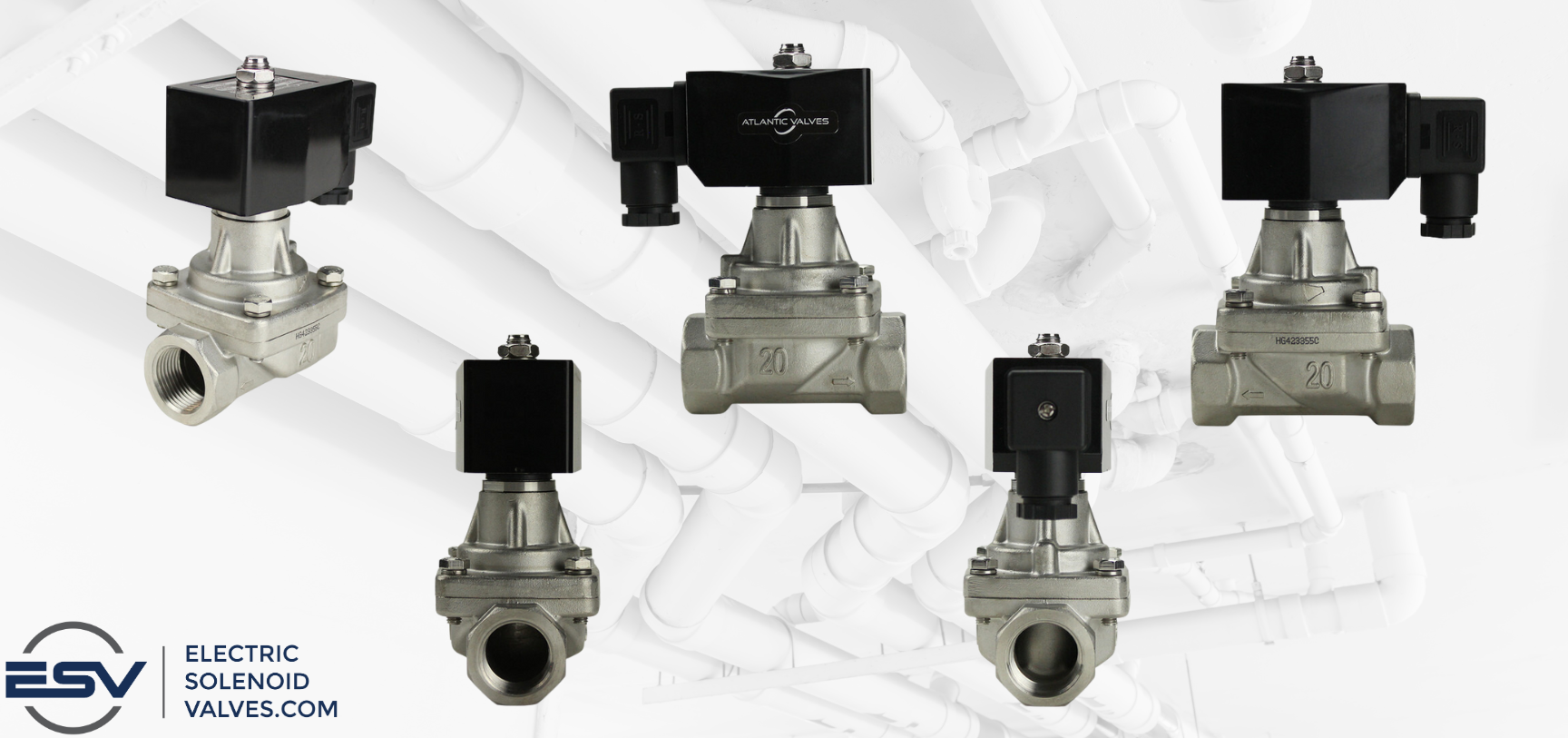Apr 16th 2024
Leveraging Steam Solenoid Valves to Optimize Productivity In the Food Processing Industry
Introduction
Steam is a crucial component in food production systems. It is a tool that drives efficiency in different processing environments. The use of steam ranges from heating and cooking various food products and associated raw materials to sterilizing and sanitizing food processing and handling equipment and packaging materials. Steam is also critical for preparing food processing machinery - it is used to thaw frozen food products and clean machinery before production begins.
Steam Quality and Its Implications for Distribution and Regulation Systems
In food processing facilities, steam is used in various qualities, including saturated, wet, or superheated, each with specific properties and requirements. Steam, irrespective of its quality, has a high temperature. In some production processes, steam is supplied at high pressure.
These physical properties of steam imply that steam distribution and regulation systems must utilize high-quality materials and standards to guarantee longevity and process efficiency. Solenoid valves for steam distribution in food production systems must accommodate steam pressure and temperature and exhibit excellent performance characteristics at each food processing and production stage.
1” Stainless Steel Steam Solenoid Valve
Benefits of Steam Solenoid Valves in Food Production
Including steam solenoid valves in food processing systems provides a means to regulate steam effectively and achieve desired food processing goals. They regulate steam flow rates, pressure and flow direction. Such steam regulation allows food processors to heat food materials consistently. They also allow for regulated steam distribution for cleaning and sterilization purposes.
Keeping steam solenoid valves in apt operating conditions can enhance the overall productivity of food processing systems. Suboptimal performance of these valves in food production systems has negative consequences. These effects can be anything from low-quality food products (undercooked, overcooked or unevenly cooked), to production delays, equipment inefficiencies and safety hazards.
Steam Distribution Optimization with ElectricSolenoidValves.com
How is ElectricSolenoidValves.com solving problems associated with steam distribution in food production systems? How can food processors leverage our range of high-quality steam solenoid valves to drive efficiency and optimize productivity in their production facilities?
Factors to Consider When Selecting Steam Valves For Food Processing
The food processing sector operates in a highly regulated environment and must adhere to several health and safety provisions. Selecting the correct steam valves requires careful evaluation and consideration of various operating parameters. It allows system designers and process engineers to identify the most appropriate set of valves that can offer precise and predictable steam distribution.
Broad considerations when choosing steam valves for food processing include:
- Material requirements and hygiene
- Valve reliability and longevity
- Steam pressure and temperature
- Actuation and automation needs
1 - Material Requirements and Hygiene
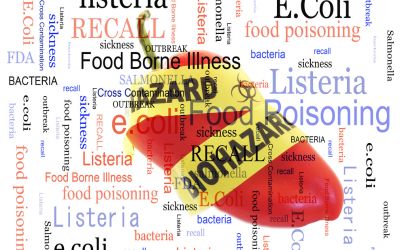
Hygiene in food processing systems is a top priority. Any contamination in the production system has dire consequences on the safety and quality of finished products. When selecting valves for steam service, ensure the fabrication or manufacturing materials meet the stringent hygiene requirements associated with food processing.
Most steam valves are manufactured with stainless steel bodies. Stainless steel has excellent corrosion-resistant properties, contributing to elevated hygiene standards. Stainless steel continues to exhibit strong corrosion resistance even when exposed to varying steam temperatures and pressures.
Steam valves in food processing should have a sanitary design for optimal defenses against contamination. The material and valve design should have smooth internal surfaces with no crevices and dead spots. Materials like stainless steel 304 and 316L allow smooth internal valve finishes and can undergo additional surface treatment for better adaptability to steam distribution systems through processes like electroplating.
Another thing to consider when selecting steam valves for food production is the compatibility of the valves with food-grade materials. The valve body and seals should not be sources of cross-contamination. Their food compatibility characteristics must remain optimal throughout the valve service life.
2 - Valve Reliability and Longevity
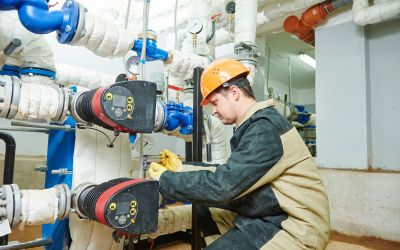
Another thing to consider when choosing valves for steam service is their desired reliability and longevity. Manufacturing materials play a crucial role in the longevity of the valve. Valve reliability depends on whether the production process is automated or not and if the valves can always achieve the desired steam flow control requirements while in service. Valves for steam service can suffer accelerated wear and tear due to the aggressive nature of steam.
Food processors can enjoy uninterrupted production processes if the steam service valves can effectively accommodate changes in operating conditions and the valves do not fail often. Frequent valve failures (due to periodic wear and tear) can negatively affect food processing activities and lead to workplace injuries. Therefore, steam valve selection processes must consider the desired valve operating service length vis-a-vis the prevailing operating conditions.
3 - Steam Pressure and Temperature
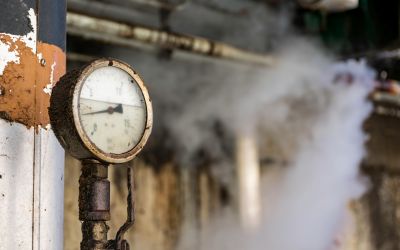
Pressure and temperature requirements for different food processing activities vary. The pressure and temperature required for cooking food differ from that needed for sterilizing production systems. It does not mean the company will install different sets or sizes of steam valves to perform the varying tasks. However, proper valve selection and sizing will ensure a single valve can accommodate the elevated steam temperature and pressure required to cook food (using dry and saturated steam) and provide adequate flow control for wet steam to clean the equipment after cooking.
Ensuring the steam valves have the appropriate pressure ratings prevents the likelihood of any failures during the different stages of production and food processing. Proper sizing based on flow rates, pressure and temperature ratings also prevents cases of restricted flow (smaller steam valves) or delayed process response (due to oversizing), which reduces the overall effectiveness of food processing systems.
4 - Actuation and Automation Needs

Automation is significant in the food processing industry. It allows food processors to complete repetitive tasks with predictable degrees of accuracy and speed. The automation systems used in food processing facilities vary, with companies relying on electrical, pneumatic and hydraulic actuation systems. When choosing steam valves, system designers and engineers must evaluate the existing or preferred automation system.
It is practical to utilize solenoid valves for steam service if the existing production equipment relies on electric automation systems. Employing pneumatically actuated valves for such systems will imply higher installation costs. The goal of valve actuation and automation in steam distribution systems of the food processing industry is to achieve better product quality and meet compliance requirements. The steam valves must enhance system responsiveness and be compatible with existing systems for better productivity.
How Steam Solenoid Valves Overcome Challenges Associated with Steam Service
Steam solenoid valves are a specialized category of flow control devices vital for service media control in demanding steam distribution systems. They are electromechanical valves whose solenoid is energized and de-energized, opening or closing the steam flow path depending on its design. The action of the electromagnetic coil of the steam valve opens, closes or alters the direction of steam, responding to prevailing food production requirements.
Electric Solenoid Valves offers steam solenoid valves designed for aggressive steam service similar to ones in food processing facilities. These valves can provide adequate regulation and control of liquids and steam at different pressures and temperatures. The valves, available in AC and DC ratings, can service steam of up to 180 degrees centigrade and pressure of up to 90 PSI and 145 PSI for DC and AC-powered valves, respectively. How do these valves overcome predominant challenges associated with steam service in the food processing industry?
Hygiene and Material Compatibility
They can meet the highest hygiene standards required for the food processing sector. Steam solenoid valves in our catalog are fabricated from Stainless Steel 304 and PTFE/Teflon seals. These are high-quality valve materials. The stainless steel can undergo additional surface treatment, allowing manufacturers to adapt the valves for the aggressive steam service and equip them with adequate defenses against contamination, promoting excellent hygiene and sanitary conditions for production.
Automation and Remote Control
Steam solenoid valves are automatic. These valves rely on electrical signals to operate the solenoids and open or close the valves in response to desired steam flow and control requirements. This level of automation means operators can remotely regulate steam flow rates, pressure, and temperature without direct human intervention. Such automation is critical for ensuring overall safety within the facility. Automating steam valve operation using electrical signals also ensures consistency in steam service for optimal productivity.
Quick Response and Adjustability
Steam solenoid valves have quicker responses compared to manually operated steam valves. The solenoids can rapidly open or close steam flow paths. The fast action is ideal for food processing facilities where steam demand is dynamic - the requirements and quality of steam required for food processing change over time. These valves provide a quick and easy means to adjust steam flow to different production units.
Safety Features
Solenoid steam valves have better safety standards. Solenoids are designed with additional fail-safe features. These features allow the valves to automatically shut off steam distributions should an anomaly arise in the steam distribution system. These safety capabilities ensure food production operations are restricted to designed limits, preventing potential accidents and workplace injuries.
While steam solenoid valves have several advantages, there are operations where installing them can be costly or untenable. These include operations where more steam pressure and flow rates are essential. In such processes, it may be necessary to install automated electric ball valves or manual ball valves. Ball valves will provide better steam flow rates. However, they may not be suitable for throttling operations.
Another alternative to steam solenoid valves is the diaphragm-type steam valves. They are suitable for installation in production systems with limited valve spaces. They can accommodate high flow rates and promote system cleanliness.
Optimizing Steam Solenoid Valve Performance in Food Processing
The choice and reliability of steam solenoid valves directly impact the productivity and reliability of food processing systems. These valves dispense steam in the desired volume, pressure, and temperature. It demands the valves must be in excellent working conditions to supplement the quality and productivity requirements of food processing facilities. What are some best practices to consider during the lifecycle of steam solenoid valves?
Proper Installation of Steam Solenoid Valves
Installation practices affect the lifetime performances of steam solenoid valves. During installation, technicians and engineers should:
- Follow manufacturer-provided installation guidelines. These guidelines ensure the valves are installed following the correct orientation and flow direction. Installation guidelines provide torque specifications and limits. Following these guidelines prevents cases of leakage and premature failure.
- Ensure proper alignment with adjacent pipes. Proper alignment is essential for balancing stress and strain on the piping systems, minimizing the possibility of steam leakage from around the valve body.
- Utilize the correct grade and type of gaskets during valve installation. The gaskets should be food grade (compatible with foods under processing) and can provide adequate sealing across the operating system pressure and temperature.
- Thoroughly clean the piping system before connecting the solenoid steam valves. Removing debris from the steam line before valve installation and commissioning ensures the system is devoid of debris and foreign material that could damage internal valve components.
- Consider installing y-strainers upstream of steam solenoid valves. A Y-strainer can effectively filter out sediment and debris from the steam, which are common in steam supply lines, especially in systems where old pipes might corrode or degrade. By catching these particles before they reach the solenoid valves, Y-strainers help prevent clogs and reduce wear on the valve mechanisms, thereby extending the operational life of the valves and maintaining consistent steam quality and flow.
Maintenance Best Practices
Regular and proper maintenance ensures steam solenoid valves can withstand the test of time. Maintenance interventions can unearth potential valve performance issues before they cause system-wide downtime. Some maintenance best practices for steam solenoid valves include:
- Conducting regular visual inspections to assess the general conditions of valves. Maintenance personnel can identify surface cracks or leakage and rectify them in time. Develop a routine inspection schedule and note the conditions of each steam solenoid valve in the food production line.
- Regularly lubricate solenoid valves (if they have provisions for lubrication). Ensure lubrication utilizes the recommended food-grade lubricant.
- Inspect solenoids for any signs of wear or damage. Solenoid valves may fail over time if they overheat.
- Clean inlet filters if the steam solenoid valves are installed with one. Cleaning and replacing these filters prevent clogging, which may affect the quality and quantity of steam flowing through the valve.
Leak Detection and Repair
- Conduct a regular visual inspection to check for steam leakage around the steam solenoid valve body, bonnet, and flange connections.
- Utilize acoustic leakage detectors to check for the slightest steam leakage through the valve. Some leakages are undetectable by visual inspection.
- Repair steam solenoid valves with acceptable steam leakage rates. These repairs may include replacement of aging seals and gaskets. Replace solenoid steam valves exhibiting excessive steam leakage.
Maximizing Steam Valve Efficiency for Food Safety and Productivity
Proper utilization and care of steam solenoid valves can unlock better productivity and efficiency in food processing systems. These valves offer consistency and fast responsiveness to changes in demand for steam to process food and clean production equipment. The longevity and reliability of these valves demand best practices when handling and maintaining them.
Consult our experts at Electric Solenoid Valves for all your steam solenoid valve needs if setting up or operating a food processing facility. You can also check our catalog for the best, high-quality steam solenoid valves for steam service in your food processing business.


